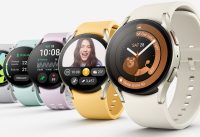Unveiling the Inner Workings of Quest 3’s Controller Tracking: Meta Breaks Silence as Beat Saber Founder Weighs In
In a stunning revelation, Meta, the company formerly known as Facebook Reality Labs, unveiled the highly anticipated Quest 3 on Thursday, sending shockwaves through the virtual reality (VR) community. Set to hit store shelves this fall with a starting price of $500, the Quest 3 promises to revolutionize the VR landscape once again.

One of the most significant changes in the Quest 3 lies in its new Touch Plus controllers, which diverge from their predecessors in several key ways. Gone are the familiar IR LED rings that adorned the Touch controllers of the Quest 2, as well as the cameras found in the self-tracking Touch Pro controllers. Meta claims this innovation is made possible by remarkable advances in tracking technology, leaving many VR enthusiasts intrigued.
During an Instagram “ask me anything” (AMA) session the following day, Meta’s Chief Technology Officer, Andrew Bosworth, delved deeper into the intricacies of the Touch Plus controllers. Bosworth revealed that these controllers still possess infrared LEDs, albeit situated on their faces instead of encircling them in tracking rings. This arrangement, however, presents a potential challenge, as the LEDs can be frequently obscured by the user’s hand or when facing away from the headset’s cameras. To overcome this obstacle, the Quest 3 ingeniously incorporates continuous controller-free hand tracking, seamlessly merging it with LED tracking. By combining the optical tracking data with the accelerometers and gyroscopes inherent to all VR controllers, Meta ensures a refined and accurate tracking experience.
Meta’s innovative approach to the Touch Plus controllers hints at a significant enhancement in controller-free hand tracking on the Quest 3, possibly owing to the presence of a depth sensor. Although Meta has remained tight-lipped about the details of the Quest 3’s hand tracking capabilities, they tantalizingly suggested that it would “take another step forward.”
However, the speculation surrounding Quest 3’s controller tracking capabilities raised concerns among some VR industry insiders. Bloomberg’s Mark Gurman conjectured that certain games might experience tracking issues, leading to apprehension about the Touch Plus controllers potentially offering inferior tracking performance compared to their Quest 2 counterparts. Nevertheless, these concerns were promptly quelled when Jaroslav Beck, co-founder of the wildly popular game Beat Saber, assured the community, “It’s good. Don’t worry.”
Interestingly, Beat Saber has long served as a benchmark for Meta’s internal assessment of controller tracking since the inception of the original Oculus Quest. To further assuage doubts, a Meta employee recently claimed that Quest 3’s controllers also pass the rigorous Expert+ test employed by the company.
Beyond the tracking enhancements, the decision to eliminate the rings confers notable usability advantages. As we highlighted in our Quest Pro review, users can bring the controllers closer together at any angle without the risk of inadvertently colliding with unseen plastic in the virtual realm. This seemingly minor adjustment opens up a world of possibilities, enabling precise hand-to-hand interactions and enhancing existing interactions such as reloading firearms.
With the Quest 3 poised to make its grand entrance later this year, anticipation continues to mount. As the VR community eagerly awaits further revelations, Meta has set the stage for yet another milestone in the ever-evolving landscape of immersive technology.




